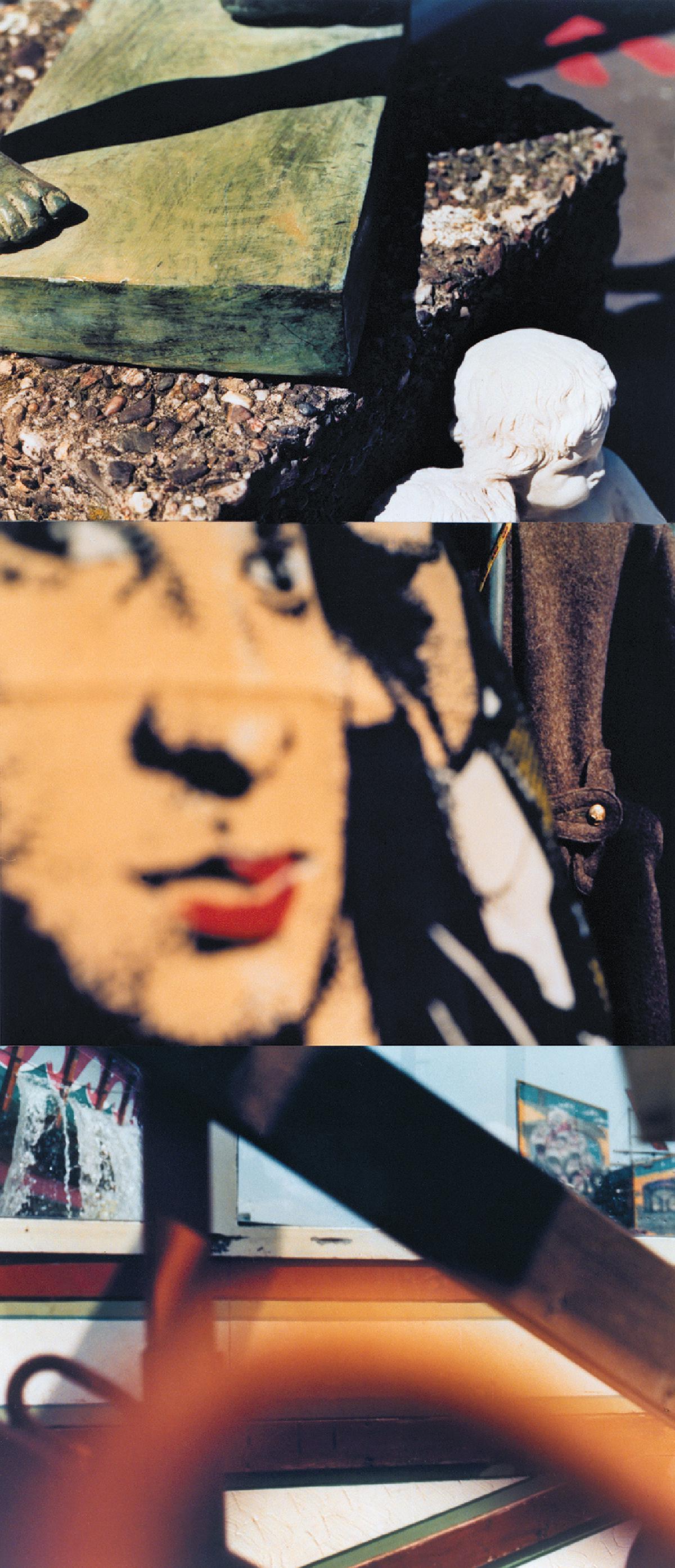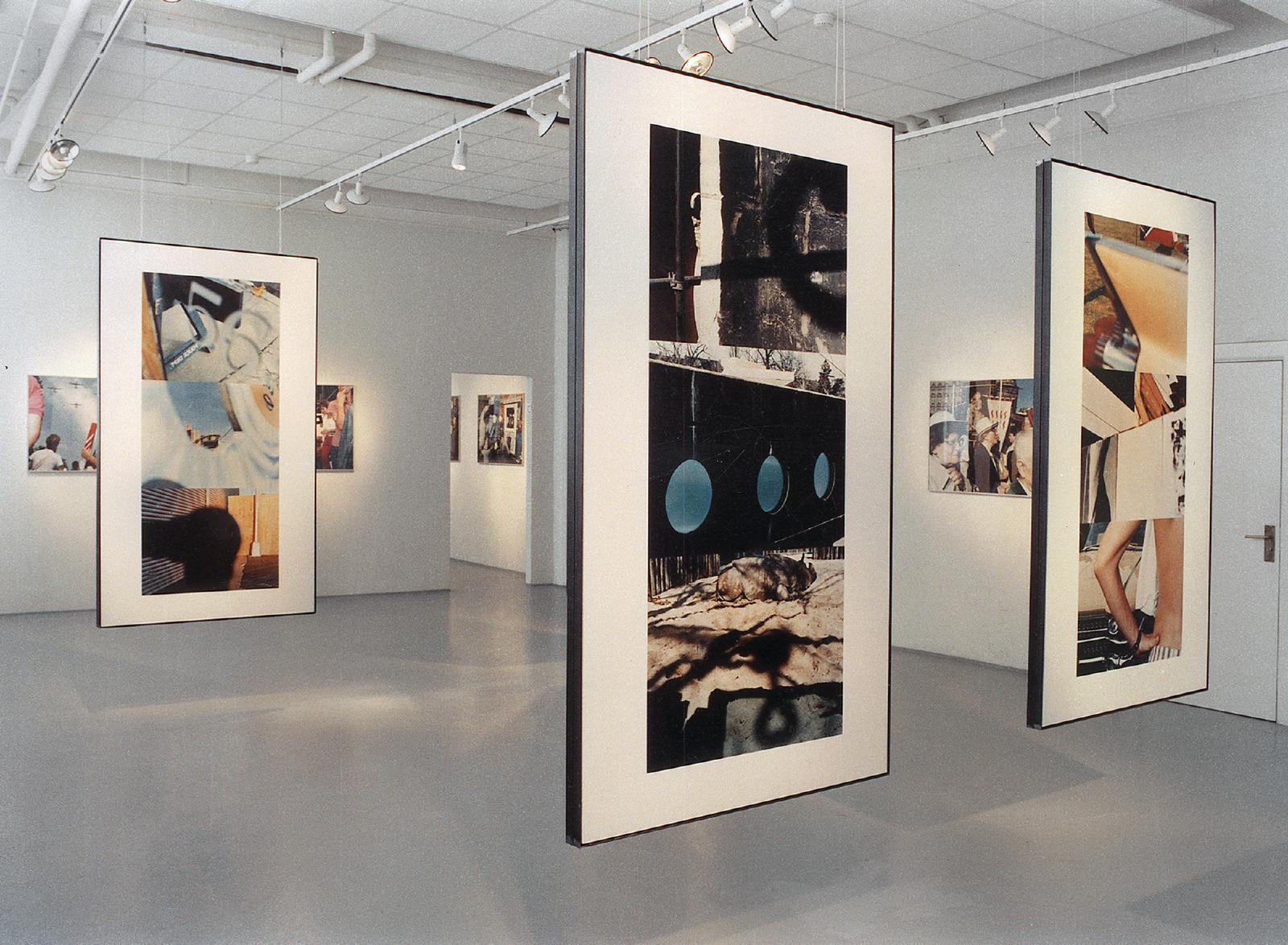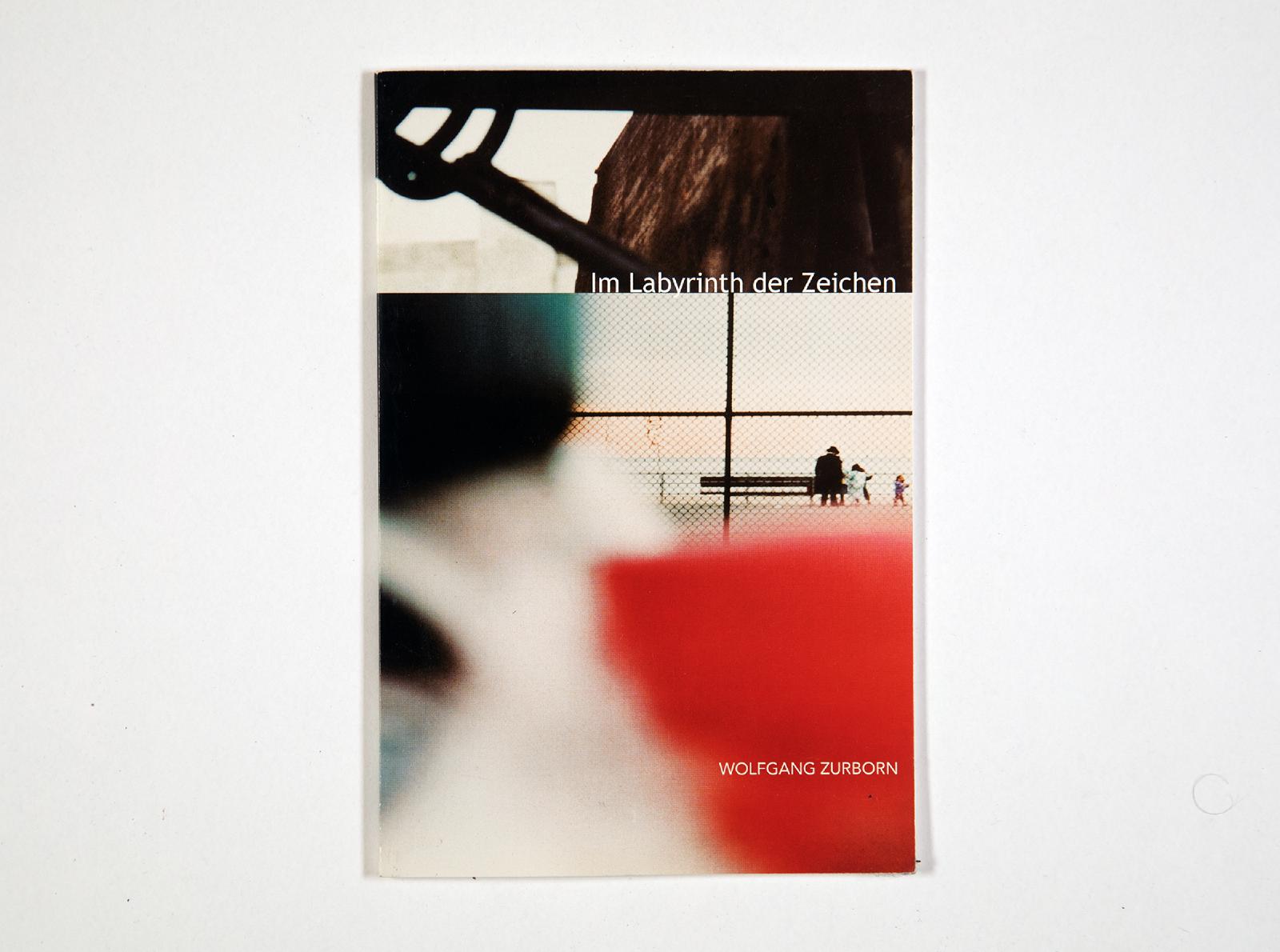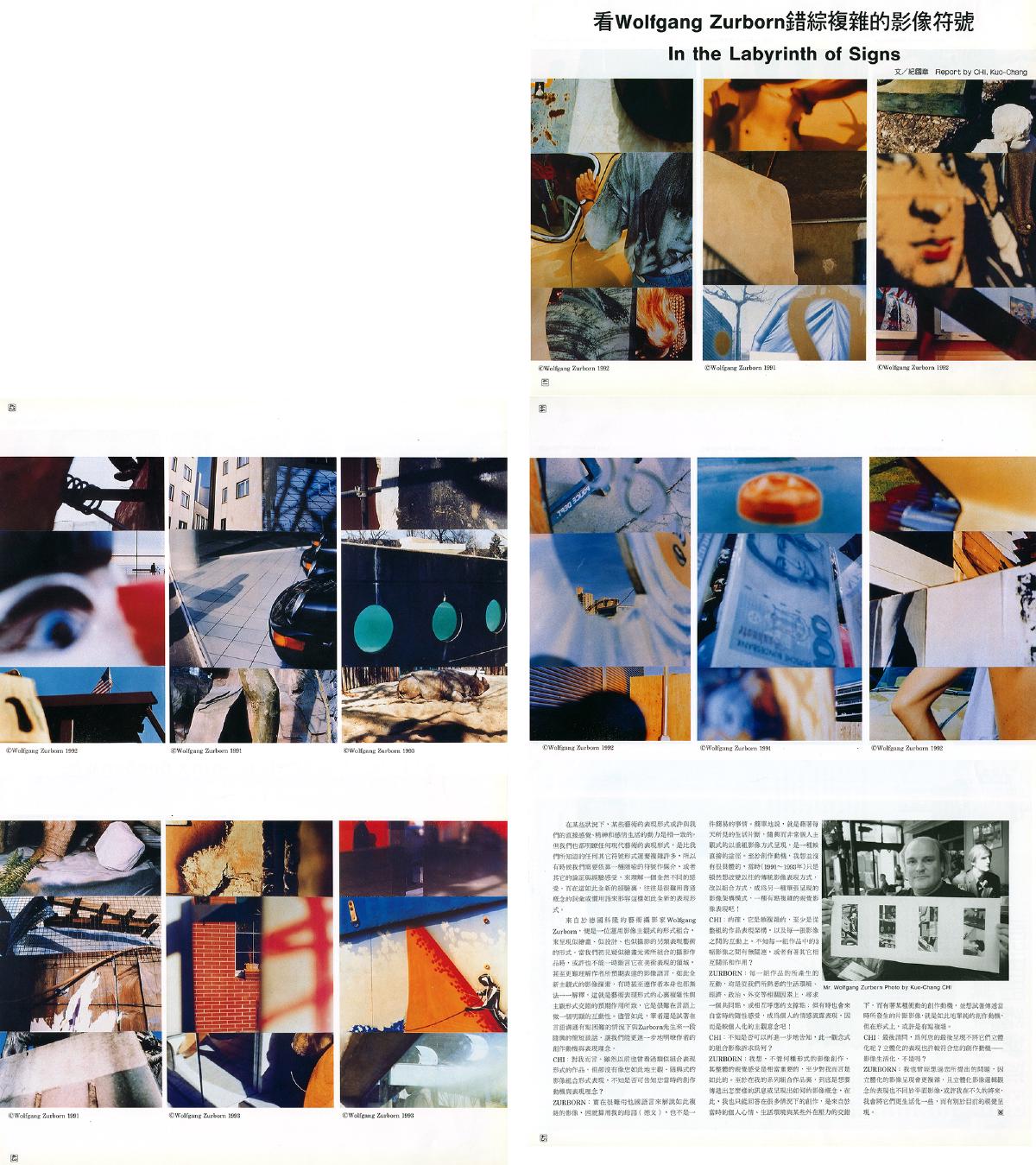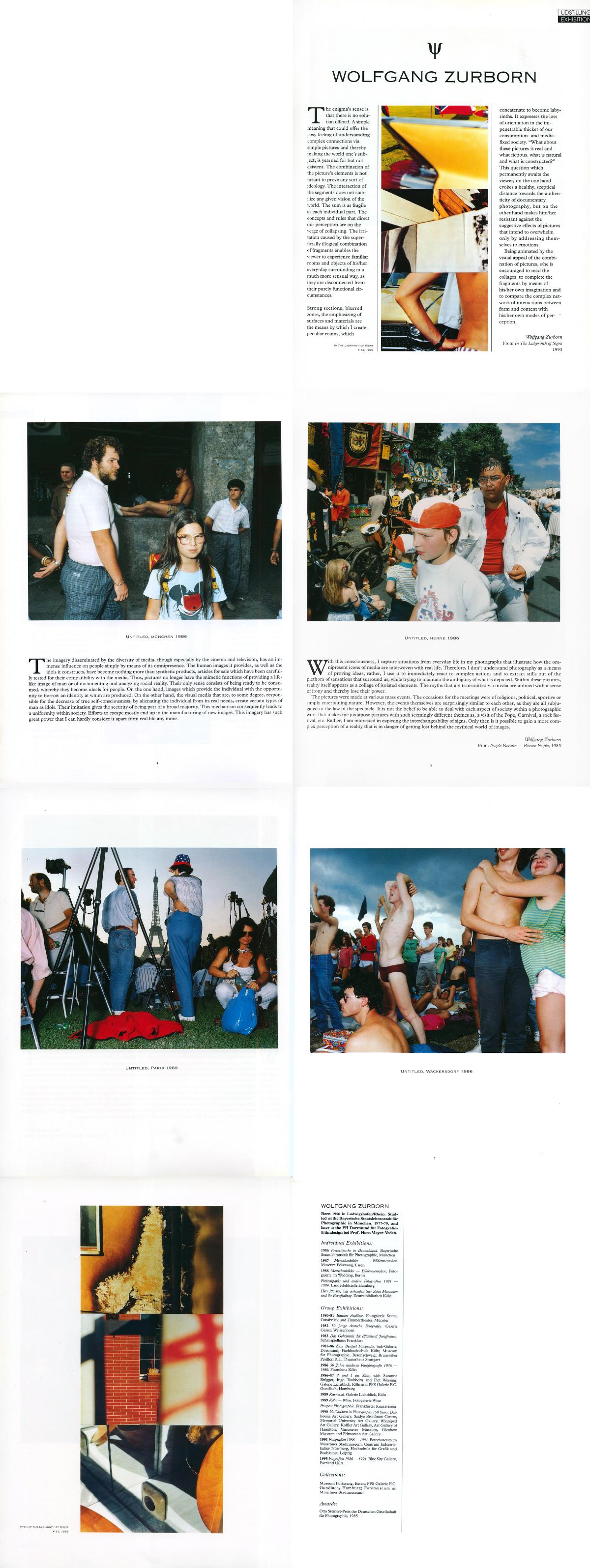In the Labyrinth of Signs
| Solo exhibitions | ||
|---|---|---|
| 2006 |
Im Labyrinth der Zeichen Meeting with the Middle East / 9th International Photography Gathering, Aleppo, Syria |
|
| 2000 |
Im Labyrinth der Zeichen Psychoanalytische Arbeitsgemeinschaft, Köln, Germany |
|
| 1999 |
Im Labyrinth der Zeichen Fotografie Forum international, Frankfurt, Germany |
|
| 1999 |
Im Labyrinth der Zeichen Museum für Kunst und Gewerbe, Hamburg, Germany |
|
| 1997 |
ART NTC Doppelausstellung Wolfgang Zurborn - Fotografische Arbeiten, Justus Mandelaub - Gemälde Neurologisches Therapiezentrum, Köln, Germany |
|
| 1996 |
Im Labyrinth der Zeichen Staatliche Galerie Moritzburg, Halle, Germany |
|
| 1996 |
Im Labyrinth der Zeichen R(h)einblick, Köln, Germany |
|
| 1994 |
Fotografien 1986-1993 Gentofte Hovedbibliotek, Copenhagen-Hellerup, Denmark |
|
| 1994 |
Fotografien 1986-1993 Museet for Fotokunst, Odense, Denmark |
|
| 1994 |
Im Labyrinth der Zeichen ACC Galerie, Weimar, Germany |
|
| Group exhibitions | ||
|---|---|---|
| 1998 |
Konstruktionen der Bilder Deutsche Fotografische Akademie, Leinfelden-Echterdingen, Germany |
|
| 1997 |
Susanne Greven, Maix Mayer, Wolfgang Zurborn Fotografische Arbeiten f • m • schwarz galerie, Köln, Germany |
|
| 1996 |
20 Years Blue Sky Gallery Augen Gallery,, Portland OR, United States |
|
| 1995 |
Ralph Bageritz - 11 Jahre Ehrenstr. und Umgebung Ehrenstr., Köln, Germany |
|
| 1995 |
Spiel Galerie Article, Köln, Germany |
|
| 1995 |
KÖLNKUNST 4 BBK, Köln, Germany (Katalog) |
|
| 1993 |
TATA OST Globus Galerie, Leipzig, Germany (Katalog) |
|
Riddling Imagination
Incisions in the world of everyday myths
by Peter V. Brinkemper
For more than a decade, Wolfgang Zurborn has investigated the relation between photography and public space, while not trying to depict urban landscapes objectively, nor investigating human behaviour the way a journalist would. Rather he has posed a philosophical question by means of photography: How far is it possible for a subject in the digital age to attain individual cognition and performance in an everyday public context? Everyday worlds and the worlds of images dialectically merge in the subject’s mind: views of the perpetually changing Lebenswelt are unrecognizably bound to the omnipresent pictures from the mass media.
To Zurborn, traffic terminals, concert fields, stadiums, shopping malls, business and entertainment parks are the zones the media invade, where the relationship between man and public space take on new aggregate states of individual cognition and action. Classical urban architecture’s mission to create urban spaces, intelligible institutions of power and design public squares and locations for social communication and the orientation of free citizens has faded into the background.
In the city centers, as well as at the former city borders, perfectly functioning arenas of entertainment arise, towers of capital, consumer malls, transit spaces for pedestrians and passengers, who meet accidentally, only to immediately disappear again, densely packed and yet isolated, without any distance or reflection. Names and meanings are given these ahistorical and artificial worlds from outside, through prefabricated events, soaps, brands and slogans.
Wolfgang Zurborn has roamed these non-spaces. In his blindingly flashed, colorfully packed, obliquely cut “pictures of people” he depicts the living chaos of individuals, how side by side and almost in slow motion they follow their media dreams, thus becoming “picture people” miles away from themselves, from each other and from their desired images. The subtext of these photographs lies in the wide gap between the ironically twisted documentary substrate and the subjective perspectivation.
From the stream of impressions, stills are taken, that function politically, because they ask about the influence of popular myths on individual existence, but without offering handy solutions. Photography proves to be an ironically collaged counterforce. By means of the “split view” it radically explores the leeway left to personal perception and confronts it with the perfectionist totality and the standardizing mindset of the mass media.
In the “Labyrinth of Signs”, Zurborn puts this concept to its hardest test yet. His method of compressing disparate perspectives onto one picture plane and stressing the diversion of motives by a decentered composition is carried to extremes in the vertical photo combinations. The aesthetic value of perspectival individuation can thus fully unfold and reveal the visual dissonance of today’s public space.
The radical cutouts of the supermounted photographs intensify the network character of these works. Every partial picture has a sensual artery of sharply focussed and blurred zones. Their particular degrees of abstraction create a subtle balancing act between the free act of associative view and the undeniable reference to social reality. In the situational single pictures of the series “Menschenbilder - Bildermenschen” ( People Pictures - Picture People) the contingent scenic context is maintained through sophisticated eccentric compositions and, at the same time, fractured by countless indications beyond the picture’s edge, the off. In “Labyrinth of Signs” the alleged coherence of the world, the supposed unity of space, time and place has been basically shattered. The fragments of everyday perception have been reduced to the limits of recognizability. At stake is the identification of each fragment and the exploration of its contextual importance by the viewer. Zurborn: “The materials, planes, colors and lines acquire the character of strange signs, become part of a visual riddle and start to interact, beyond the boundaries of the particular segments. The meaning of this riddle is that there is no solution. Photography produces a maze of signs”.
What is staged is the confrontation of the carefully searching eye with the multi-contextuality of the world and its perpetual transformation as well as the genealogy of the photographic gaze this side of the tautological clichés, an inventive view that challenges the viewer to a productive completion. The virtual scenery in which things meet or collide is no longer outside the photographic view, not in any given order, but is grounded in the perceiving imagination of the subject.
Wolfgang Zurborn’s photography sees itself as the medium of an active process of understanding that corresponds to the dynamics of what, in the end, is uncontrol-lable about public space. Glassy see-throughs, rough superimpositions, irritating distortions, massive blocks and porous crevices, low-key transitions and daring leaps, seeming insides and tricky outsides, semantically balanced conglomerates and more narrative-oriented collages - the compositional range of the “Labyrinth” works is broad, in order to capture the experience of today’s everyday perception in its living complexity and its rapidly accelerated change.
In the Labyrinth of Signs
by Wolfgang Zurborn
Fragments of the real every-day-worlds are combined to collages to make signs, materials, surfaces, colours and lines start playing their own game beyond the limitations of the single picture segment. Rigid rules would only impede the spectator’s lust of letting his/her curious look wander across the surfaces of these enigmatic pictures. Thus, I avoid any kind of simplifying ordering principles that could suggest a definite mode of interpretation.
The enigma’s sense is that there is no solution offered. A simple meaning that could offer the cosy feeling of understanding complex connections via simple pictures and thereby making the world one’s subject, is yearned for but not existent. The combination of the picture’s elements is not meant to prove any sort of ideology, the interaction of the segments does not stabilise any given sight of the world. The sum is as fragile as its single part. The concepts and rules that direct our perception are set to collapse. The irritation, which is caused by the superficially unlogical combination of the fragments, enables the viewer to experience familiar rooms and objects of his/her every-day surrounding in a much more sensual way, as they are being disconnected from their purely functional circumstances.
My respect towards the objects makes me not only use them as raw material for subjective pictorial compositions, but also to give them the freedom to develop their own lives within these constructions of reality. Any direct references to the banal reality in these collages work as shields against any kind of presupposed meaningful content. Being liberated from the ultra-meaning of the myth, the pictures regain their own, inner meaning. Their presentations are not getting ecclensed to become timeless symbols for human existence. The traces of the present, out of which they are built, are meant to enable the viewer to experience social reality. By getting transparent as incisions in diachrony, the pictures turn themselves against the false nature of every-day-myths. These myths get lost in the chaos of signs and remain completely left to the whole of their absurdity.
Strong sections, blurred zones, the emphasizing of surfaces and materials are the means by which I create peculiar rooms, which concatenate to become labyrinths. It expresses the lose of orientation in the impenetrable thicket of our consumption- and media-fixed society.
“What about these pictures is real and what fictious, what is natural and what is constructed?”
This question which permanently attends the viewer, on the one hand evokes a healthy, sceptical distance towards the authenticity of documentary photography, but on the other hand makes him/her resistant against the suggestive effects of pictures that intend to overwhelm by only addressing themselves to emotions.
Being animated by the visual appeal of the combination of pictures, s/he is encouraged to read the collages, to complete the fragments by means of his/her own imagination and to compare the complex net of formal and contentual connections with his/her own modes of perception.
This dialogue is made possible, as the pictures present themselves as completely subjective constructions. No dogmatic tautologies of a naive belief in a definite truth or reality obstruct him/her, neither is s/he smothered by an absolute demand of a subjectivist world-view. The combinations of the photographs have a character of openness, as chance is deliberately involved into the process of creating. This allows the spectator to have his/her own, stratified and complex possibilities of association.
Wolfgang Zurborn
